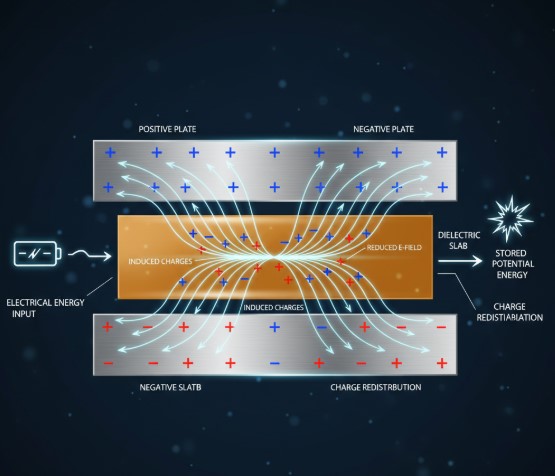Mars Sample Return Mission is progressing with NASA’s innovative strategies aimed at retrieving Martian samples while keeping costs down and timelines tight. Recent reports highlight how the agency is streamlining operations to ensure these precious soil and rock samples reach Earth by the mid-2030s, a significant improvement over the original 2040 target. Especially noteworthy is the potential to save billions of dollars from an initial budget of $11 billion, showcasing NASA’s commitment to efficiency and mission integrity.
Table of Contents
- Innovative Cost-Reducing Techniques for Mars Sample Retrieval
- The Role of Perseverance Rover in Collecting Martian Samples
- Strategic Landing Options for the Sample Retrieval Lander
- International Competition in Mars Exploration: A Look at China’s Initiatives
- Innovative Cost-Reducing Techniques for Mars Sample Retrieval
In addition to fresh approaches, NASA is exploring partnerships with commercial spaceflight companies like SpaceX to further enhance the Mars Sample Return Mission’s feasibility. By leveraging both proven technologies and new ideas, the agency hopes to optimize every detail of the mission, including the design of the Mars Ascent Vehicle. This collaborative spirit not only focuses on fiscal responsibility but also vows to redefine the future of Martian exploration for scientists and enthusiasts alike.
We also Published
“The only way to do great work is to love what you do.” – Steve Jobs
NASA is advancing its mission to retrieve samples from Mars, utilizing fresh strategies to cut costs and expedite timelines. Recent reports outline the agency’s intense focus on optimizing its approach for collecting Martian soil and rock samples. The goal is to return these samples by the mid-2030s, a timeline that could see significant advancements compared to the previously targeted 2040 window. With potential savings ranging from billions of dollars off an original budget of $11 billion, NASA is tirelessly working on innovative methods that promise to enhance efficiency while maintaining mission integrity.
Innovative Cost-Reducing Techniques for Mars Sample Retrieval
In its endeavor to make the Mars Sample Retrieval mission affordable and achievable, NASA is exploring various innovative techniques. A core tactic lies in leveraging tried-and-true technologies that have been successful in previous missions, aiming to mitigate unnecessary risks and development expenses. For instance, instead of relying solely on solar panels, NASA is contemplating the implementation of a compact nuclear battery to provide reliable power during Mars’ notorious dust storms. This approach not only addresses energy concerns but ensures the lander remains functional under challenging climatic conditions.
To further trim the mission’s budget, collaboration with commercial spaceflight entities like SpaceX or Blue Origin is on the table. This partnership could potentially lower operational costs through shared resources and expertise. Moreover, NASA is assessing the design and size of the Mars Ascent Vehicle (MAV) to optimize expenses without compromising performance. By reevaluating these critical components, NASA intends to significantly reduce the projected budget to an estimated range of $5 billion to $8 billion while still aiming for a sample return between 2035-2039. The combination of these strategic moves could pave the way for a successful, cost-effective mission.
The agency is proactively seeking fresh ideas from both the private sector and its internal divisions to devise alternative mission frameworks that are more economical and efficient. A formal call for innovative solutions is expected by the fall of 2024, allowing industry experts and researchers to contribute to NASA’s goal of an improved Mars Sample Retrieval mission architecture. This inclusive strategy not only enhances creativity but brings about a robust network of contributions that could redefine the future of Martian exploration.
The Role of Perseverance Rover in Collecting Martian Samples
The Perseverance rover holds an instrumental place within NASA’s Mars Sample Retrieval mission, meticulously collecting and storing precious Martian samples. Since its successful landing in February 2021, Perseverance has explored Jezero Crater, an area thought to have once contained a lake, amassing crucial samples that may unveil significant insights into Mars’ geological history and climate evolution. As the rover diligently gathers samples, it stores them in specially designed titanium tubes, ensuring the integrity and safety of the material for future analysis.
Thus far, the rover has successfully collected 30 samples, which are safely housed within its body, awaiting retrieval. Additionally, NASA has devised a backup plan to preserve sample integrity. This plan involves establishing a sample depot at “Three Forks” within Jezero Crater, containing 10 strategically placed titanium tubes on the Martian surface. This collection comprises eight tubes filled with rock and regolith samples, one atmospheric sample, and one “witness” tube designed for monitoring contamination. This robust redundancy strategy not only enhances the mission’s success prospects but ensures sample availability even in the face of unforeseen operational challenges.
Should Perseverance encounter difficulties prior to transferring the samples to the Sample Retrieval Lander (SRL), the mission can still achieve its primary objectives. The extensive planning and forethought put into sample preservation demonstrate NASA’s commitment to ensuring the success of its Mars exploration programs. This level of preparedness not only verifies the operational success of Perseverance but directly contributes to the overarching goals of scientific discovery surrounding Mars’ past and potential for life.
Strategic Landing Options for the Sample Retrieval Lander
As part of the Mars Sample Retrieval mission, NASA is evaluating two distinct strategies for the landing of the Sample Retrieval Lander (SRL) on Mars. The first strategy is a refined version of the Sky Crane technology, successfully used for past rover landings, including both Curiosity and Perseverance. This approach costs between $6.5 billion and $7.5 billion and entails using a heat shield, parachute, and retrorockets for deceleration before lowering the lander on cables. This method enables precise land placement, ensuring the SRL is located optimally for sample retrieval.
The second option involves utilizing a commercial heavy lander, potentially sourced from collaborations with companies like SpaceX or Blue Origin. While this option may be more budget-friendly, its limitation lies in its inability to deliver the lander directly onto the Martian surface with the precision of the Sky Crane. This distinction necessitates distinct techniques for achieving a successful touchdown, one of the critical factors influencing NASA’s decision. Evaluating both strategies based on elements like cost, technical feasibility, and mission timeline will guide NASA’s ultimate choice, which is anticipated to be finalized by mid-2026 following extensive engineering analysis.
By weighing these options carefully, NASA demonstrates its commitment to making informed decisions that will dictate the success of future explorations. The combined efforts on Mars exploration underscore the dynamic landscape of space exploration, addressing the intricate challenges of interplanetary travel while pushing the boundaries of human knowledge. As NASA continues on its path toward achieving its ambitious Mars Sample Retrieval objectives, all eyes remain fixed on the unfolding timeline of space exploration.
International Competition in Mars Exploration: A Look at China’s Initiatives
Meanwhile, China has expedited its plans for the Tianwen-3 Mars sample return mission, now set for a 2028 launch, moving up from the previous 2030 intent. This ambitious initiative aims to gather no less than 500 grams of Martian samples, with an aspiration to return them to Earth by 2031. Should this timeline be realized, China may lead in the race for Martian samples, intensifying international competition in space exploration.
The Tianwen-3 mission is poised to consist of two independent launches using Long March-5 rockets: one to transport a lander along with an ascent vehicle, and another for an orbiter and Earth-return craft. Additionally, there are plans to incorporate a foldable helicopter and a six-legged robot to facilitate sample collection operations. With a primary scientific objective centered around searching for historical signs of life on Mars, this mission has the potential to provide crucial insights into Martian geology and astrobiology.
International collaboration plays a pivotal role in this mission, as there are intentions to share returned samples with the global scientific community. This approach could foster collaborative efforts and enhance the quality of research findings derived from Martian material. China’s headlong advancement in its space ambitions has intensified competition with the United States, presenting a critical moment in the ongoing exploration of Mars. As the race for Martian resources escalates, the landscape of space science is convinced to evolve dramatically, creating an exciting period of discovery before us.
| Key Aspect | Details |
|---|---|
| Mission Objective | Retrieve and return Martian soil and rock samples by mid-2030s. |
| Budget Optimization | Target budget reduced to $5-8 billion from an original $11 billion. |
| Technological Innovations | Consider compact nuclear battery for energy during dust storms, rather than just solar panels. |
| Collaborations | Partnerships with private entities like SpaceX and Blue Origin to lower costs. |
| Perseverance Rover’s Role | Collecting and storing 30 Martian samples in titanium tubes. |
| Sample Depot | Establishment of a sample depot containing 10 tubes at “Three Forks.” |
| Landing Strategies | Evaluating Sky Crane technology vs commercial heavy lander for precision landing. |
| China’s Initiative | Tianwen-3 mission launching in 2028 aims for 500 grams of Martian samples by 2031. |
| International Collaboration | Shared returned samples with global scientific community to enhance research findings. |
Innovative Cost-Reducing Techniques for Mars Sample Retrieval
- NASA is focused on retrieving Martian soil and rock samples by the mid-2030s, aiming for a significant budget cut from the original $11 billion to between $5 billion and $8 billion.
- The agency is exploring collaborations with commercial spaceflight companies like SpaceX to take advantage of shared resources and established technologies.
- The Perseverance rover is crucial for collecting samples and has already gathered 30, with plans for a backup sample depot to ensure sample integrity.
- Nasa is evaluating two landing strategies for the Sample Retrieval Lander, weighing the precision of Sky Crane technology against a more budget-friendly commercial heavy lander.
- China’s Tianwen-3 mission is set to launch in 2028 and aims to intensify international competition in Mars exploration, potentially returning samples by 2031.
We also Published
RESOURCES
- Mars Sample Return: Science Overview – NASA Science
- With First Martian Samples Packed, Perseverance Initiates … – NASA
- NASA presents two new plans in the race to return samples from Mars to …
- NASA to Explore Two Landing Options for Returning Samples from Mars
- Mars Sample Collection Mission – NASA Science
- Mission Concept – Science@NASA
- Mars Sample Collection – NASA Jet Propulsion Laboratory (JPL)
- NASA Sets Path to Return Mars Samples, Seeks Innovative Designs








0 Comments